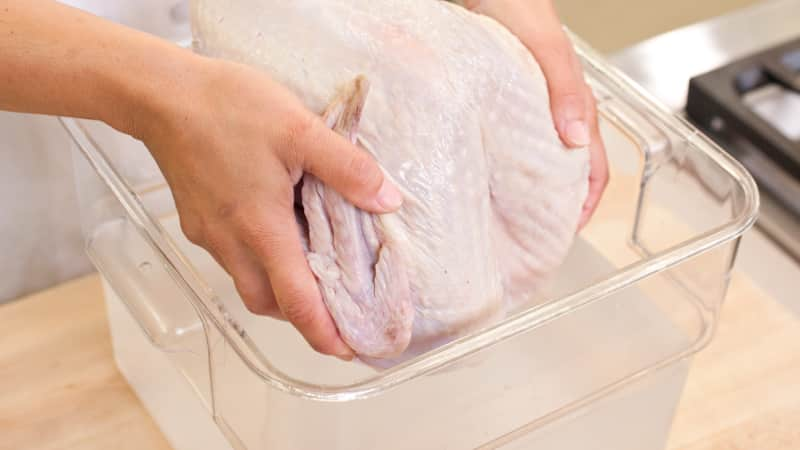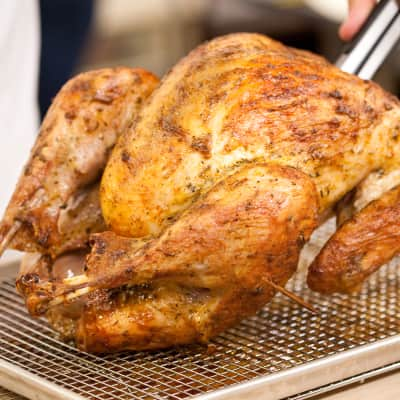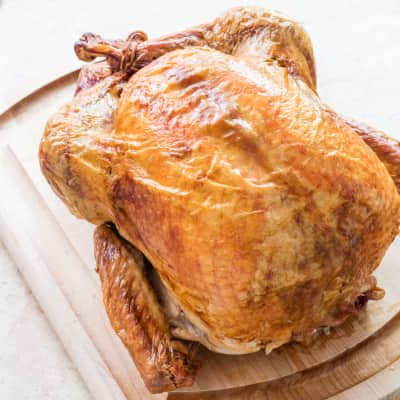We recommend brining or salting a turkey to make it moist and flavorful. How can you choose which one is right for you?
How to Brine a Turkey and How to Salt a Turkey
Published Oct. 5, 2015.

Salting turkey in advance is one way to season the meat and keep it juicy. When salt is applied to raw poultry, juices inside are drawn to the surface. The salt then dissolves in the exuded liquid, forming a brine that is eventually reabsorbed by the poultry. The salt changes the structure of the muscle proteins, allowing them to hold on to more of their own natural juices. Salting requires time, but it won't thwart the goal of crispy skin. We prefer to use kosher salt for salting because it's easier to distribute the salt evenly.
How to Salt Turkey
Whole turkey: Apply kosher salt (1 teaspoon per pound) evenly inside cavity and under skin of breasts and legs, wrap tightly with plastic wrap, unless your recipe calls for air-drying at the same time as salting, and let rest in refrigerator 24 to 48 hours.
Boneless or bone-in turkey breast: Apply kosher salt (¾ teaspoon per pound) evenly between skin and meat, leaving skin attached, and let rest in refrigerator on wire rack set in rimmed baking sheet at least 6 hours or up to 24 hours. (Wrap with plastic wrap if salting for longer than 12 hours.)
Brining works in much the same way as salting. Salt in the brine seasons the turkey and promotes a change in its protein structure, reducing its overall toughness and creating gaps that fill up with water and keep the meat juicy and flavorful. Brining works faster than salting and can also result in juicier lean cuts since it adds, versus merely retains, moisture. But note that brining inhibits browning, and it requires fitting a brining container in the fridge. Also, because it's soaking up liquid, achieving perfectly crisp skin with brining is more difficult. In these cases, make sure to pat the skin as dry as possible prior to cooking. We prefer to use table salt for brining since it dissolves quickly in the water.
How to Brine Turkey
Whole turkey (12 to 17 pounds): Mix 2 gallons cold water with 1 cup table salt; brine 6 to 12 hours
Whole turkey (18 to 24 pounds): Mix 3 gallons cold water with 1½ cups table salt; brine 6 to 12 hours
Bone-in turkey breast (6 to 8 pounds): Mix 1 gallon cold water with ½ cup table salt; brine 3 to 6 hours.
Also, many turkey recipes call for basting. So we ran a few tests to see if this was a necessary step. The verdict? Don’t bother.
Basting does nothing to moisten dry breast meat. The liquid just runs off the turkey and it actually turns the skin soggy. Basting also means you have to constantly open and close the oven, meaning you lose heat and have to cook the turkey for a longer amount of time.
So skip the baste; it wastes time and turns out to be counter-productive. If you’re really concerned about moist breast meat, then brine or salt the bird before cooking it and be careful not to overcook the bird.






